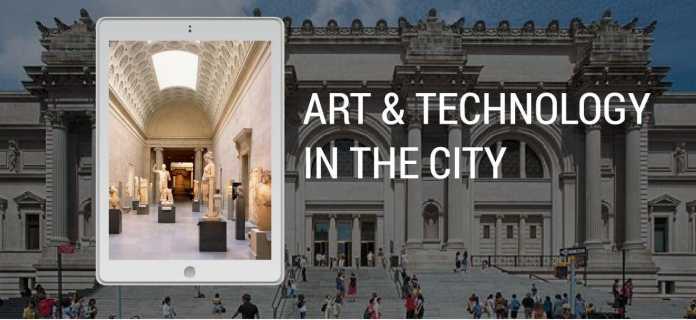National Gallery of Modern Art (NGMA) was home to engaging discussions on Friday night about the impact of technology in art. The panel included Shishir Jayant, Head of Business Development- India and South-East Asia at Google, Sumant Rao who is a Professor in the Industrial Design Centre, IIT Bombay, Leena Kejriwal who is an Artist and the founder of the MISSING Campaign and Shivaprasad Khened who is the Director of Nehru Science Centre, Mumbai and NGMA.
The event started with a short video on Avid Learning, which is a public programming platform of Essar Group. The panel discussion began by stating the importance of that day which happened to be International Museum Day. Later, Leena Kejriwal talked about her MISSING Campaign which aims at raising awareness of girls who disappear from their homes, as they are abducted and sold into prostitution. She said that this was made even more successful by technology as she released a game which put one into the shoes of such girls.
Shishir Jayant from Google managed to give us an idea about the Google Art and Culture Project which allows one to virtually tour museums, paintings, art galleries etc. Jayant stated that the project was not to take away from actually going to the museum but to compliment it. He observed that certain physically disabled individuals or individuals who have to travel a huge distance to see certain works would be benefitted by this project. He also gave an example of a girl in the US who was asked to do a project on the railways of India but couldn’t actually afford to go to India.
Professor Sumant Rao gave us a good insight into the workings of virtual technology in museums to help people understand what they don’t see. He is currently trying to use photogrammetry to help people view the Ajanta and Ellora caves in a virtual way. He has also worked towards re-creating the story of some paintings found in that area through line-drawings. The painting will be virtually converted to line-drawings by an artist; however, the story will be the artists’ impression and may or may not be true.
Rao is also attempting to divide paintings into sequences so that one knows where to look first, in order to truly understand the painting. He also wants the museum to be a mixture of a virtual and real experience in order to be able to make people understand their history more. Animations and holograms also create an interactive experience.
Khened was able to give us an overall insight into the topic, assuring us that by no way is technology taking over. He stated that technology and real-world art and monuments will co-exist. He also stated how programs like ‘Machined to Think’ at the Nehru Science Centre allowed science to be more interactive.
The session ended with a question and answer round where the panel addressed a question about 3D printing and how it will play an important role in future technologies. Jayant also talked about how the museums and galleries involved in Google Art and Culture project retain the Intellectual Property Rights when asked about it. Digital Art was also addressed and stated to be important in promoting culture, and also helping to visualise old paintings like Rao’s line drawings. The vote of thanks was followed by a promise to have another program about Poetry in the City very soon.




























